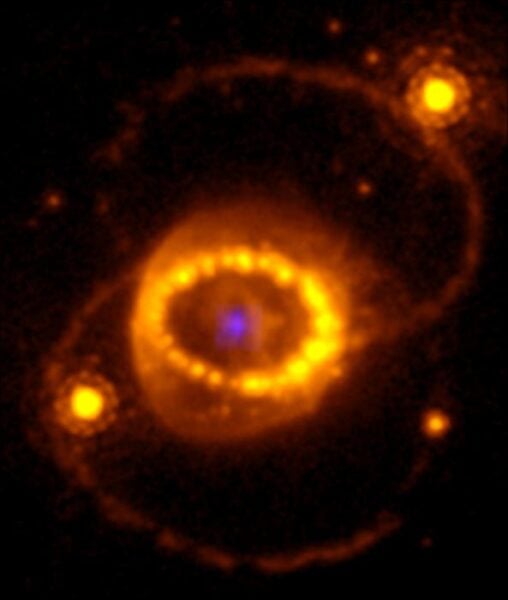Astronomers have achieved a significant breakthrough in understanding the aftermath of supernova explosions, particularly in the case of Supernova 1987A (SN 1987A), which occurred in the Large Magellanic Cloud, near the Milky Way.
This supernova, visible to the naked eye and the most extensively studied in history, has long puzzled scientists regarding the fate of its core. Now, thanks to observations made with the James Webb Space Telescope (JWST), researchers have finally detected evidence of a neutron star, resolving a decades-old mystery.
Supernovae, the dramatic endpoints of massive stars exceeding 8-10 times the mass of the Sun, play a crucial role in the universe. They not only generate essential elements like carbon, oxygen, silicon, and iron necessary for life but also give rise to some of the most enigmatic celestial objects, including neutron stars and black holes.
Despite decades of scrutiny, determining the outcome of SN 1987A’s explosion has proven elusive. Early detection of neutrinos hinted at the formation of a compact neutron star, but the direct observation remained challenging due to obscured views caused by debris from the explosion. Now, in a study published in the journal Science, an international team of astronomers, led by Claes Fransson, reports the detection of signals indicating the presence of a neutron star within the remnant of SN 1987A.
Using the JWST, researchers observed spectral lines suggestive of ionizing radiation emitted by either a hot neutron star or a pulsar wind nebula surrounding it. This finding not only confirms the existence of a neutron star but also sheds light on its properties and the environment around it.
This discovery marks a significant milestone in our understanding of supernova remnants, says Fransson, professor at the Department of Astronomy, Stockholm University. The detection of a compact source of ionizing radiation, likely a neutron star, validates previous predictions and simulations, offering new insights into the aftermath of supernova explosions.
Josefin Larsson, professor at the Department of Physics, KTH Royal Institute of Technology, adds that the unexpected discovery of the neutron star through emission lines from argon adds another layer of intrigue to our understanding of SN 1987A.
The JWST observations provide compelling evidence supporting the long-standing hypothesis of a neutron star formation in the aftermath of SN 1987A, furthering our knowledge of stellar evolution and the cosmic processes shaping our universe.
For more information, read the article in Science: “Emission lines due to ionizing radiation from a compact object in the remnant of Supernova 1987A“.
If our reporting has informed or inspired you, please consider making a donation. Every contribution, no matter the size, empowers us to continue delivering accurate, engaging, and trustworthy science and medical news. Independent journalism requires time, effort, and resources—your support ensures we can keep uncovering the stories that matter most to you.
Join us in making knowledge accessible and impactful. Thank you for standing with us!

